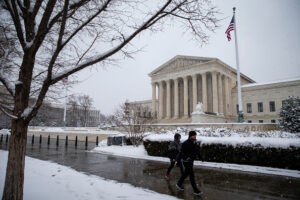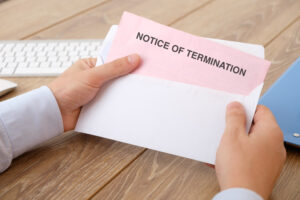It
is
not
uncommon
for
parties
to
represent
themselves
if
they
are
legally
permitted
to
do
so.
Lawyers
can
be
very
expensive
for
ordinary
litigants,
and
some
types
of
civil
matters
are
more
conducive
to
parties
representing
themselves
rather
than
engaging
counsel.
However,
courts
sometimes
treat
lawyers
and
pro
se
parties
differently
when
managing
their
dockets,
and
this
might
seem
unfair
to
some
people.
Most
of
the
matters
I
deal
with
involve
cases
in
which
all
parties
are
represented
by
counsel,
but
when
I
handle
landlord-tenant
matters
or
other
types
of
cases,
I
see
some
pro
se
parties
in
the
courtrooms
I
occupy.
In
some
courts,
lawyers
sit
in
a
separate
section
than
pro
se
parties.
For
instance,
in
some
landlord-tenant
courts
in
which
I
have
appeared,
lawyers
are
instructed
to
sit
in
the
jury
box
whereas
all
of
the
pro
se
parties
need
to
sit
in
the
area
of
the
court
designated
for
the
public.
The
jury
box
is
more
comfortable
than
other
parts
of
the
courtroom,
and
I
always
wondered
if
this
distinction
was
a
result
of
favoritism
for
lawyers
from
judicial
officers.
However,
there
are
some
good
reasons
why
courts
may
wish
to
segregate
lawyers
from
pro
se
parties.
It
is
often
important
to
know
who
is
a
lawyer
and
who
is
a
pro
se
party
since
business
entities
cannot
represent
themselves
in
certain
instances.
I
can
also
see
a
situation
in
which
court
officers
might
fear
friction
erupting
between
pro
se
parties
and
the
lawyers
who
they
are
opposing,
so
perhaps
it
is
easier
to
keep
lawyers
separate
from
pro
se
parties.
In
some
courts
in
which
I
appear,
including
landlord-tenant
courts,
parties
often
need
to
wait
for
hours
until
the
court
calls
their
cases
to
be
heard.
However,
some
courts
have
a
policy
by
which
they
hear
cases
in
which
all
parties
are
represented
by
counsel
first
before
hearing
cases
involving
pro
se
parties.
One
justification
I
heard
for
this
practice
is
to
minimize
the
amount
of
billable
time
clients
need
to
pay
for
their
lawyers
to
be
in
court.
Another
justification
for
this
practice
is
that
hearing
cases
involving
lawyers
first
frees
up
lawyers
to
handle
other
matters,
which
could
be
positive
for
the
administration
of
justice.
However,
pro
se
parties
often
need
to
take
time
off
of
work
to
appear
in
court,
and
their
time
is
valuable
as
well.
Courts
may
not
be
able
to
say
that
the
time
of
lawyers
is
more
valuable
than
the
time
of
other
people
who
appear
in
court.
Accordingly,
it
may
seem
unfair
that
lawyers
do
not
need
to
wait
as
long
as
other
parties
to
have
their
cases
heard.
Another
practice
that
courts
have
when
all
parties
are
represented
by
lawyers
is
that
the
case
is
conferenced
with
the
judge
in
chambers.
Perhaps
this
is
because
court
staff
may
not
feel
as
safe
permitting
pro
se
parties
to
go
into
a
judge’s
chambers.
Moreover,
judges
may
wish
to
make
things
more
public
by
conferencing
matters
in
open
court
when
the
matter
involves
a
pro
se
party.
However,
pro
se
parties
may
see
this
as
a
preferential
practice,
and
it
might
make
sense
to
conference
all
matters
in
open
court
even
if
the
parties
are
represented
by
counsel.
I
have
never
clerked
or
otherwise
worked
at
a
courthouse,
and
I
am
sure
that
courts
treat
pro
se
parties
differently
from
lawyers
for
good
reasons.
I
would
love
to
hear
from
court
officers
on
why
they
establish
different
practices
for
lawyers
than
they
follow
for
pro
se
parties.
However,
courts
need
to
be
cognizant
that
such
practices
may
seem
unfair
and
only
follow
such
procedures
when
the
benefits
significantly
outweigh
the
perceived
unfairness.
 Jordan
Jordan
Rothman
is
a
partner
of
The
Rothman
Law
Firm,
a
full-service
New
York
and
New
Jersey
law
firm.
He
is
also
the
founder
of
Student
Debt
Diaries,
a
website
discussing
how
he
paid
off
his
student
loans.
You
can
reach
Jordan
through
email
at
[email protected].















